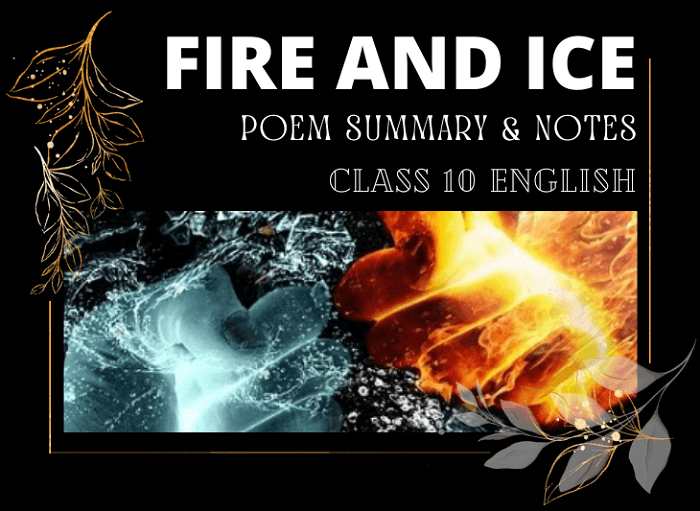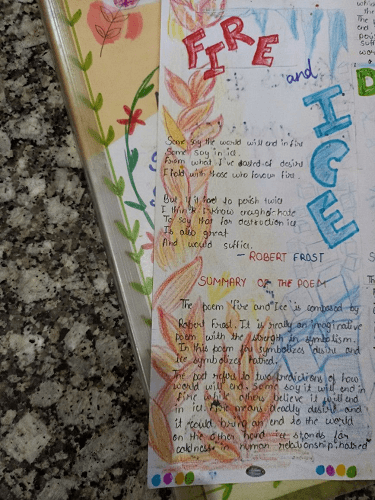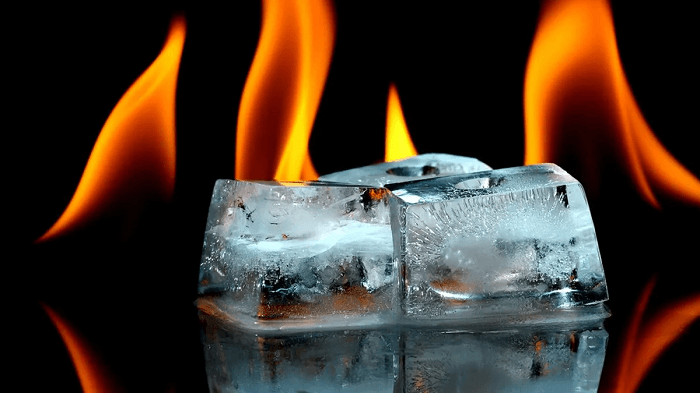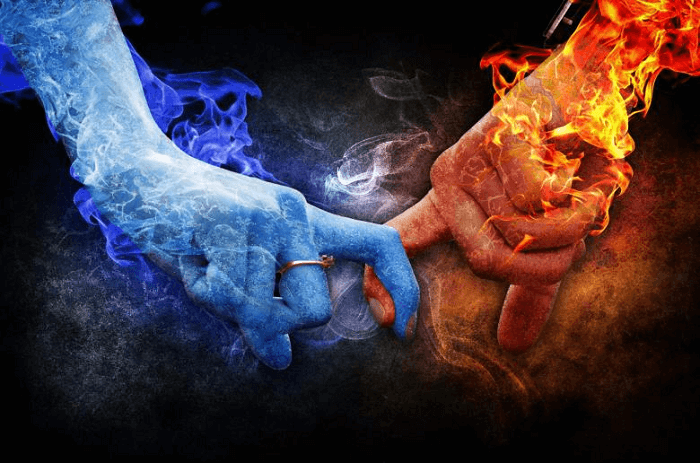Fire and Ice SummaryOne of the most renowned poets in American literature, Robert Frost, wrote a brief poem titled "Fire and Ice." His collection "New Hampshire," which brought him his first Pulitzer Prize, was first published in 1920. The poem has nine lines and is composed of just one stanza. Despite its briefness, "Fire and Ice" has received high criticism for its bleak and stirring portrayal of the end of the world. The poem's title alludes to the two antagonistic elements of fire and ice, which have long been thought responsible for the world's end. Frost examines the ramifications of each element through a series of striking metaphors and imagery before posing the question of which of the two will ultimately bring the end of the world. 
The Poem's Deeper MeaningThe significance of "Fire and Ice" is intricate and multidimensional and has been interpreted in several ways. The poem's central theme is the destructive force of human emotions and wants and the possibility that these emotions could end the world. The poem's two opposing components of, fire and ice represent two types of human passion: desire and hatred. Ice is frequently connected with coldness, apathy, and hatred, while fire is frequently associated with desire, passion, and lust. Whether the individual's destruction or the entire globe's devastation, Frost contends that these extremes can bring about destruction. According to the poem's speaker, the world could end either by being engulfed in the raging fires of desire or frozen solid by the frigid grasp of hatred. The poem's final two lines, "But if it had to perish twice, / I think I know enough of hate / To say that for destruction ice / Is also great / And would suffice," imply that the speaker believes hatred to be a more potent force of destruction than ice, one that can end the world twice over. The poem is a cautionary tale about the perils of unbridled human passion and emotion and a plea for more equilibrium and moderation in our daily lives. Structure Analysis of the PoemThe brief poem "Fire and Ice" has a straightforward rhyme scheme. A single nine-line stanza of rhyme scheme ABAABCBCB makes up the poem. The poem has a sharp and condensed sense due to each line's brief length and range of three to six syllables. The poetry is concise, yet it is well-organized and under strict supervision. The poem's concept of opposing forces is strengthened by rhyme and repetition, which produces a sense of harmony and symmetry. The poem's feeling of structure and balance is also enhanced by the repeated use of the words "some say" and "desire." 
The poem's use of metaphor and imagery is also quite organized. The conflicting symbols of fire and ice which stand for desire and hate, respectively are used throughout the poem. The repetitive usage of these symbols reinforces the poem's subject of conflicting forces, fostering tension and conflict. Overall, "Fire and Ice" has a very planned and controlled structure, with each word and image selected carefully to produce a sense of harmony and tension. Despite its briefness, the poem has a significant impact and conveys a nuanced message regarding the negative effects of human emotion. Literary Devices Used in The PoemThe poem "Fire and Ice" uses several literary tropes to produce a strong and memorable piece. The poem makes use of several important literary devices, some of which are: 1. Metaphor The poem uses metaphor frequently to explore the idea of conflicting forces as representations of desire and hatred, fire and ice are employed. 2. Repetition The poem's repeated use of words like "desire" and phrases like "some say" gives it a feeling of structure and balance. 3. Alliteration Frost uses alliteration in lines like "From what I've tasted of desire" to generate rhythm. 4. Assonance Assonance is also used in the poem, as seen by the recurrent use of the long "i" sound in the words "ice" and "suffice." 5. Rhyme The poem's lines all rhyme with one or two others according to a rigorous ABAABCBCB rhyme system. 6. Visualization The poem's use of vivid imagery, such as "world for destruction," aids in conveying the apocalyptic tone of the poem. 7. Personification The poem humanizes fire and ice by giving them traits and personalities akin to people. Overall, these literary techniques support the poem's main themes and ideas while also giving the poem a feeling of structure, rhythm, and tension. Topics Touched on in "Fire and Ice"The movie "Fire and Ice" examines many issues, such as the danger of extremes, the cyclical nature of life, and the destructive force of human emotion. The poem's most important themes include the following: 
In general, "Fire and Ice" might be interpreted as a cautionary tale about the perils of unrestrained human passion and emotion and a plea for more equilibrium and moderation in our daily lives. The poem's examination of these subjects has contributed to its enduring and significant status in contemporary literature. Reception of the PoemThe poem "Fire and Ice" has received a lot of positive criticism for its clear and impactful message, vivid use of imagery and metaphor, and mastery of poetic form. Many reviewers consider it one of Robert Frost's most recognizable and unforgettable pieces. The poem's investigation of the devastating force of human emotion and its applicability to modern problems like war, global warming, and political struggle has drawn praise from critics. The poem's use of the opposing energies, fire, and ice, as symbols has also received appreciation for its clarity and potency. The poem has drawn criticism from certain reviewers, claiming it lacks depth and its message is overly basic and one-dimensional. Others have argued that the poem uses fire and ice symbols to be more balanced and obvious. 
Despite these critiques, "Fire and Ice" is still a well-known and significant poem in academic and popular culture. One of Robert Frost's most famous compositions has survived the test of time thanks to its clear and impactful message and skilful use of poetic form and imagery. Final Thoughts on the Literary Relevance of "Fire and Ice"The poem "Fire and Ice" tackles the destructive potential of human passion and the necessity of moderation and balance in our daily lives. The poem has endured and influenced modern writing because of its mastery of the poetic form and use of vivid imagery and metaphor. The poem's themes of conflicting forces, the cyclical cycle of life, and the peril of extremes have struck a chord with readers for millennia and are still pertinent to modern problems like conflict, climate change, and war. The poem's ageless message that passion and emotion should never run unchecked remains true today. Overall, "Fire and Ice" show evidence of Robert Frost's command of poetic form and his capacity to communicate complicated ideas clearly and understandably. Its continued relevance in contemporary literature is evidence of its persistent allure and capacity to engage readers of all ages. Cultural and Historical Background of "Fire and Ice"It's critical to consider the era in which Robert Frost composed "Fire and Ice" to comprehend the poem's historical and cultural context. Frost, born in 1874, experienced several pivotal moments in American history, including the Great Depression, World War I, and World War II. After World War I, the 1920 novel "Fire and Ice" was written. As a result of the damage caused by the war, there was a significant amount of social and cultural change during this period. As writers and artists sought new ways to express themselves that defied convention, modernism flourished in literature and the arts. With its warning about the devastating force of human emotion and the need for balance and control, "Fire and Ice" might reflect the zeitgeist in this setting. The poem's straightforward language and imagery also reflected the modernist movement's rejection of conventional poetry's elaborate and convoluted terminology. In general, the historical and cultural setting of "Fire and Ice" is one of doubt and transformation as authors and artists looked for fresh ways to convey the complexity of the contemporary world. The poem's capacity to speak to readers of all ages and its relevance to current events are examples of its enduring power and significance. The Works and Life of Robert FrostAmerican poet and playwright Robert Frost lived from 1874 to 1963. He is regarded as one of the most important poets of the 20th century and is noted for his use of common language and realistic representations of rural life. Frost was raised in New England after being born in San Francisco. He attended both Harvard University and Dartmouth College, although he still needs to complete his studies there. Instead, before starting his writing career, he held several jobs, such as those of a farmer and teacher. 
After releasing "North of Boston" in 1914, Frost's first book of poems, "A Boy's Will," appeared in 1913. These anthologies made him a well-known poet and brought him praise from critics. Frost published a large number of other poetry collections throughout his career, including "New Hampshire" (1923), for which he was awarded the Pulitzer Prize, and "Collected Poems" (1930), for which he was awarded a second Pulitzer. Frost wrote plays and essays on literature and culture in addition to poetry. He was a well-known and significant character in American literature, and his writing is still analysed and enjoyed today. Frost's prose is known for its straightforward language and emphasis on rural and natural settings. He frequently used uncomplicated, commonplace pictures to explore abstract concepts. His writing is renowned for its profundity and capacity to connect with readers on various levels. Robert Frost made a distinctive and significant contribution to American literature through his life and works. His status as one of America's finest poets is assured and his poetry is still praised for its clarity, profundity, and beauty. The Interaction of Form and Content in "Fire and Ice"One of the most important aspects of the poetry "Fire and Ice" is how form and content interact. The poem's focus on conflicting energies and the need for balance and control is furthered by Frost's use of a straightforward, four-line rhyming form. The poem is divided into two sections, each with two rhyming couplets. The destructive force of fire is discussed in the first stanza, and the equally devastating power of ice is discussed in the second stanza. For a poem that tackles the conflicting forces of fire and ice, the rhyme pattern (ABAABCBC) offers a sense of harmony and symmetry. Contrasting images further support the poem's subject of conflicting forces. In contrast to the destructive power of hatred and indifference, the picture of ice symbolizes the devastating strength of passion and desire. A sense of tension and struggle is evoked by Frost's use of these images and their juxtaposition, reflected in the poem's structure. The poem's straightforward language and vivid imagery, also traits of Frost's style, support its theme of the necessity for moderation and balance. Additionally, Frost's use of understatement and ambiguity, as seen in lines like "From what I've tasted of desire / I hold with those who favour fire," gives the poem additional nuance and complexity. 
"Fire and Ice" has a balanced and symmetrical link between its form and substance. The poem's theme of competing forces and the requirement for balance and restraint in our lives is furthered by Frost's use of contrasted imagery and a straightforward, rhyming pattern. The poem's ongoing appeal is evidence of its capacity to communicate complicated ideas clearly and understandably. The Poem's Use of Imagery and SymbolismRobert Frost's "Fire and Ice" relies heavily on symbolism and imagery. The poem contains a wealth of sensory and visual imagery that supports its main themes of conflicting forces and the negative effects of human passion. The opening stanza's word "fire" alludes to the destructive power of passion and desire. Words like "consumes," "burn," and "fervour" evoke a sense of heat and intensity, highlighting the force's dangerous and destructive character. On the other hand, the second stanza's use of the image of ice represents the devastating force of hatred and indifference. Words like "cold," "frost," and "hate" evoke a sense of separation and loneliness, highlighting the force's equal parts lethal and destructive nature. The poem's usage of the word "world" also acts as a potent symbol. Both fire and ice are about the planet, highlighting how these conflicting forces are commonplace. The poem's conclusion, which poses the question of how the world will end, highlights how powerful imagery and symbolism are employed throughout the poem. A potent emblem of the effects of human emotion and the value of moderation and balance is the idea of the world ending. The imagery and symbolism employed in "Fire and Ice" support the poem's main theme of conflicting forces and the destructive power of human emotion. The poem gains depth and complexity from the practical sense of tension and conflict created by using straightforward imagery and symbolism. His deft use of these components demonstrates Frost's mastery of poetry.
Next TopicKeeping Quiet Summary Class 12 English
|
 For Videos Join Our Youtube Channel: Join Now
For Videos Join Our Youtube Channel: Join Now
Feedback
- Send your Feedback to [email protected]
Help Others, Please Share









